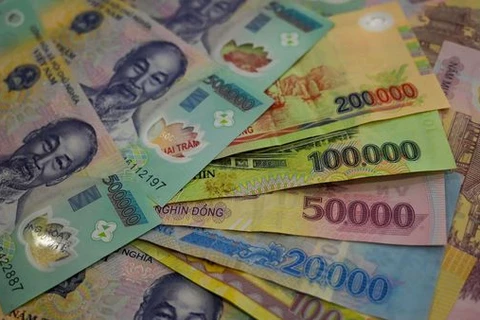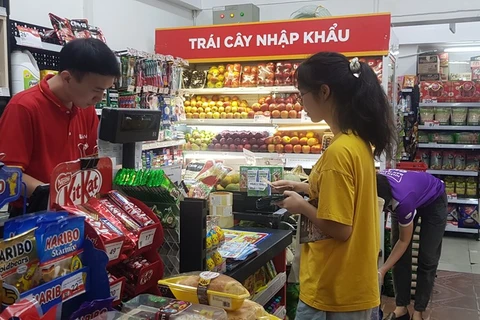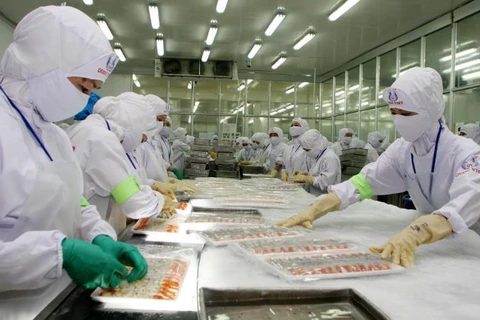Hanoi (VNA) – The United Overseas Bank (UOB)’s Global Economics & Market Research Unit has cut the full-year growth forecast for Vietnam to 5% from the earlier 5.2%.
Data released for September shows some encouraging signs that activities may have turned around as performances improved on a monthly basis, according to its recently released report.
Exports expanded in September after six consecutive months of decline, with a reading of 4.6% year-on-year. Imports showed a similar trend, gaining 2.6% year-on-year in the month after ten straight months of decline.
Industrial output posted a 5.1% year-on-year increase in September - its best performance since November 2022 - as manufacturing recorded its fourth consecutive month of year-on-year increases in output. The increase was also reflected in data for the Purchasing Managers’ Index (PMI), where Vietnam’s manufacturing PMI recorded its first expansion (above 50) in August, at 50.5, after struggling in the contraction zone (below 50) in the prior five months.
One reason that conditions are likely to improve further is the continued inflow of FDI into Vietnam.
Despite a backdrop of weak growth prospects and poor export performance for much of the year, foreign enterprises continued to commit to the country in the current wave of de-globalisation, de-risking, and supply chain shifts.
 UOB has adjusted its full-year growth forecast for Vietnam to 5% from 5.2% previously. (Photo: VietnamPlus)
UOB has adjusted its full-year growth forecast for Vietnam to 5% from 5.2% previously. (Photo: VietnamPlus) According to UOB experts, Vietnam’s FDI disbursement rose for the fourth straight month in September, with a 2.2% year-on-year increase to 15.9 billion USD.
If the rate maintains at the same pace, full-year FDI inflows are likely to match the 19.7 billion USD reached in 2021, which will be a considerable achievement given that current circumstances are dominated by uncertainty, inflationary pressure, and weakened confidence.
In the domestic arena, consumer spending seemed to have regained its momentum, with overall retail trade expanding 9.4% year-on-year in September after hovering below 7% in the prior three months and for its best month since April.
Retail sales also rose 7.4% year-on-year in September, the biggest gain since April, while accommodation and services trade output surged 34.7% after moving around the 5-10% range in the prior four months.
In the first nine months of the year, Vietnam’s economy expanded 4.24% year-on-year, which is an improvement against the 3.72% posted in the first half but was only half the pace of the 8.85% year-on-year recorded in the same period of last year.
It means that the official growth target of 6.5% is a challenge, according to UOB.
To reach this target, Vietnam’s Q4 growth rate will need to be at least 12%, which is unlikely in the current environment without sharp improvements in the underlying demand.
Despite firmer growth in Q3, the drag from the first half of the year remains significant, it said. Thus, UOB has adjusted Vietnam’s full-year growth forecast to 5% from 5.2% previously, with the assumption of further acceleration of real GDP growth in Q4 at 7% year-on-year (prior forecast of 7.6%). This would still require that activities and orders pick up quickly in the coming months.
Traditionally, Q4 is the best-performing quarter in any given year in Vietnam, though the base effect will play a disproportionately large role in 2023 due to the exceptionally strong year in 2022. As a result, UOB needed to trim further the forecasts with most of the year already passed and maintain the 2024 projection at 6%.
Dealing with a difficult economic situation, the State Bank of Vietnam (SBV) has responded quickly by cutting its refinancing rate by a total of 150 basis points by June 2023, to 4.50%.
UOB still sees the prospect of another 100bps rate cut to 3.5% but the timing has been shifted out to Q4 instead, with greater uncertainty as the SBV balances between growth and inflation risks./.

























